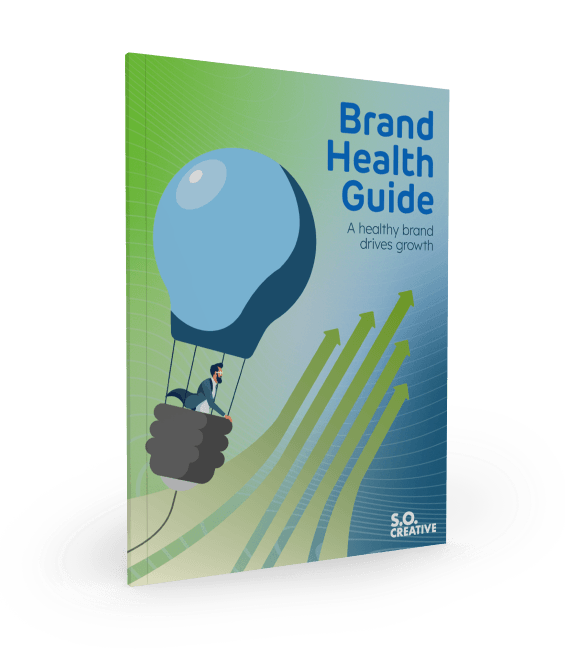Ever wonder if your B2B marketing efforts are actually generating results?
You’re not alone.
Proving the value of marketing in a B2B world can seem daunting. But with some solid information, you’ll see it come together in a fresh light.
This guide will equip you with the key metrics and tracking methods to unlock the secrets of your marketing.
But, why Measure ROI?
Think of ROI as the ultimate measuring tool for success:
- Allocate budgets: Justify marketing spend
- Boost confidence: Prove that marketing is worth it for your brand
- Make data-driven decisions: Optimize strategy based on what’s actually working
- Metrics: Your ROI Roadmap
Let’s review the key metrics to track on your ROI journey
Website Traffic & Engagement
Are people finding your site? Are they sticking around? If your website is not easily found online, then you are most likely missing out on a lot of leads and potential customers. An online presence is key for many parts of your business.
What to track:
Unique visitors to your website
Individual users who visit your site.
Bounce rate
The percentage of people who visit your website, but leave without any further interaction. This may indicate lack of engaging content and/or poor user experience on your webpages.
Time spent on site
You can also track heatmaps to find out where people are spending the most time on a particular page. A popular platform for this is Hotjar.
Forms filled out on your website
There are many types of forms you can use on your site. They can request more information, download case studies, request to be added to your email mailing list, and much more.
The amount of forms filled out correlates with who is visiting your site. This engagement keeps track of what they are looking at on your website.
Email metrics
Some important things to look at are the open rate and the clickthrough rate
S.O. Did you know?
The average B2B email open rate is 15.1%
Lead Engagement
If you are using an automated platform, contacts and web visitors are given a sales lead engagement score.
This can be based on the number of times they visit the site, how many forms they fill out, and their open rate for emails.
Your company can choose to set a specific lead number, and when a contact hits that number, a salesperson will reach out. Lead numbers indicate where a contact is in the sales pipeline.
These can be tracked with your integrated CRM platforms like Sharpspring, Constant Contact, or Hubspot.
Lead Generation & Qualification
Are you attracting the right leads? It’s very important to define your ideal customer and focus on your brand personas when working on lead generation. Having a small number of valuable leads greatly outweighs having a large number of mediocre leads.
What to track:
Lead count
Helps assess performance and effectiveness of marketing.
Cost per lead (CPL)
How much it costs to acquire a lead.
The formula for calculating CPL is total cost of campaign divided by number of leads generated.
Ex: if your marketing campaign costs $1000 and generates 100 leads, the CPL would be 1000/100= 10. So it would cost you $10 on average to acquire a lead.
Lead quality score
Used to assess the likelihood of a lead converting to a customer.
Sales & Customer Acquisition
Are leads converting into customers? Conversion is important because it increases revenue for your company. If your leads don’t convert, there are missed opportunities and wasted budget funds.
What to track:
Sales Pipeline Value
Potential revenue expected to generate from different stages in the pipeline if your sales reps closed all potential leads.
In its easiest form, it’s the sum of the value of each deal you currently have sitting in your pipeline.
If you want a more defined number, calculate it by the number of sales in your pipeline x the overall win rate percentage x the average monetary deal size/ days in the sales cycle.
Customer acquisition cost (CAC)
This is the average amount it costs to acquire a new customer. These numbers will vary greatly depending on the size and revenue of your company. And it’s a very important value to be aware of. In fact, more than 50% of marketers say that customer acquisition is the most important part of marketing.
The formula for calculating CAC is the total cost of sales and marketing divided by the number of new customers acquired.
Ex: If your company spends $20,000 on marketing for one month and you acquire 200 new customers, then the CAC would be $20,000/2000 = $100 per customer.
Conversion rates
The Lead-to-Customer Conversion Rate measures the leads that you have turned into customers as well as your company’s effectiveness to drive revenue from said leads.
If your rate is high, this means that you are adequately qualifying your leads. If your rate is low, this might prompt you to look deeper into your leads to ensure they are a good fit for your business and vice versa.
This is calculated by dividing the converted customers by the total number of qualified leads, and multiplying by 100%.
Ex: If your company gathers 20 qualified leads and 5 become customers, then your rate is (5/20) x 100% = 25% of leads became customers.
Customer Lifetime Value (CLTV)
Why is this important?
Sometimes it can be tricky to look toward the future when right now seems like the most important thing. But focusing on the long game will help you understand the total value each customer brings and maximize brand impact over time.
S.O. How do we track all of this?
Marketing Automation & Analytics Tools
Marketing automation has become an integral part of tracking analytics.
You can use these types of automated platforms to streamline your marketing efforts. Websites like Sharpspring, Constant Contact, and Hubspot have options to automate repetitive marketing tasks like email marketing and social media posts.
These tools will help save time and money, optimize ROI, and overall gather a comprehensive view of your marketing campaigns.
CRM Integration
Take advantage of all that a CRM can do for your business. By connecting your marketing data to your CRM, you will see how leads become customers, giving you insight into what’s working and what isn’t.
Using a CRM will help you keep track of your relationships and ongoing projects by consolidating information. CRMs like Monday and Hubspot are fully customizable depending on your business needs.
Tips to Remember
- Start small and prioritize your focus on a few key metrics best aligned with your goals.
- Set clear benchmarks and track progress. Remember to use SMART goals.
- Being consistent through regular monitoring and analysis. These are key to uncovering trends and opportunities you can use to maximize your efforts.
- Adapt & optimize by using ROI insights to update your campaigns for the best possible results.
Measuring B2B marketing ROI isn’t magic, but it’s close. It’s smart marketing.
By analyzing the right metrics and tracking methods, you can transform your marketing efforts into powerful business growth. Start measuring your ROI today, and see how much farther you can take your company.
Ready to turn it on?
At S.O. CREATIVE, we specialize in brand development and integrated marketing communications for B2B industries. Let’s talk ideas that drive business! Connect with us today.

